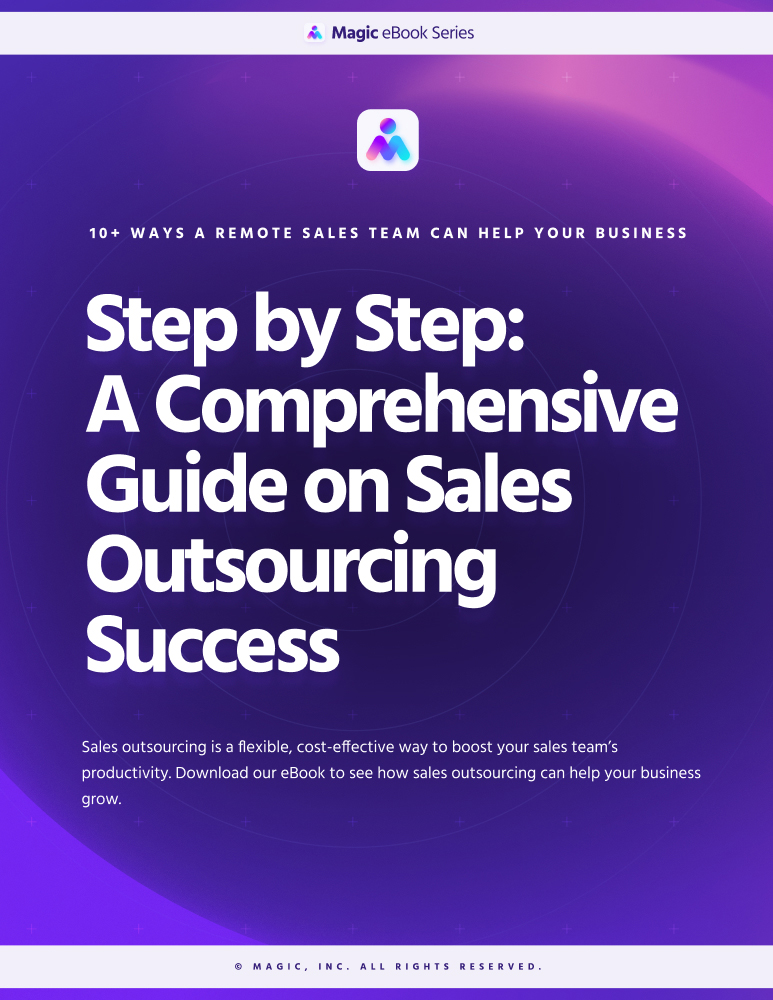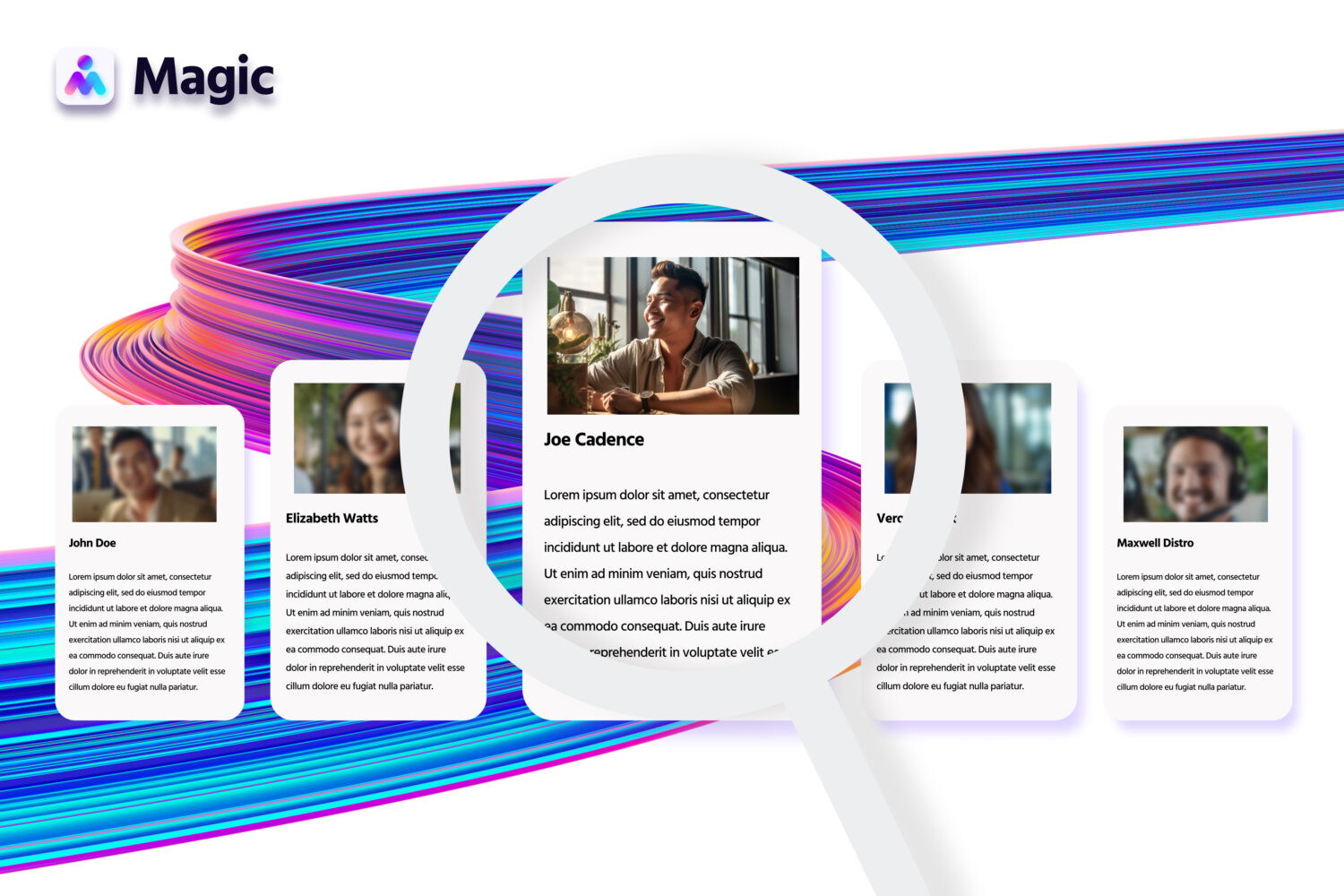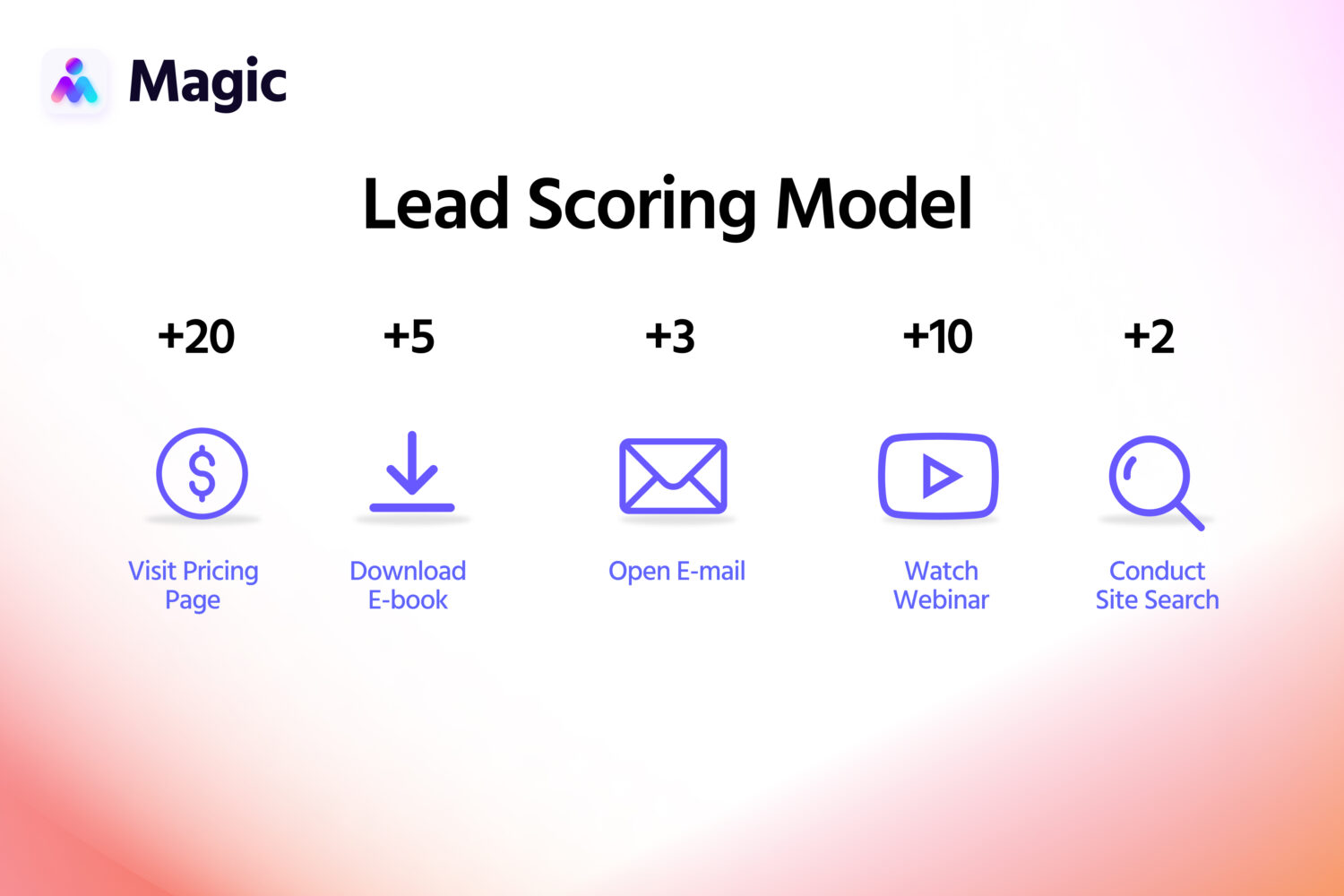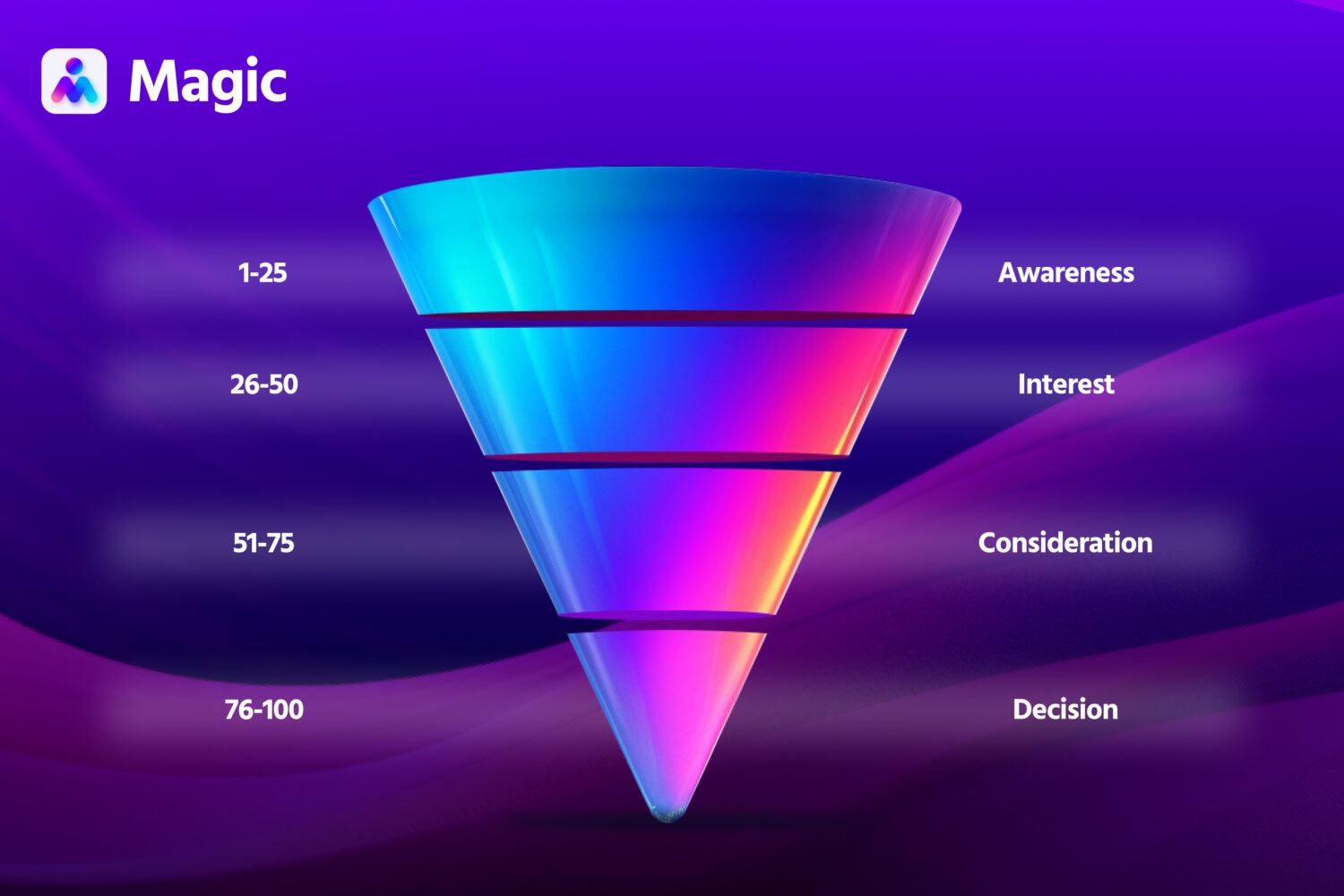The more leads you get, the more sales you can potentially make—potentially being the keyword here. Not every lead will buy in the end, and it’s simply not viable to pursue each one hoping that they will.
And that’s where lead qualification comes in.
A proper lead qualification process allows you to identify your most promising prospects so that your team can focus their efforts on them, ensuring optimal results within the limits of the time and effort your team can invest. Lead qualification, when carried out thoroughly yet efficiently, gets you better conversions with higher-value customers.
- Lead qualification is the practice of sorting potential customers according to their likelihood to buy so that you can allocate your time and effort to pursuing better conversions or sales.
- Effective lead qualification is built upon a solid framework, which you use as criteria for assessing leads’ quality. This includes how closely they fit your ideal customer profile (ICP) and the actions they take that signal intent to buy.
- The process of qualifying leads can be broken down into smaller component tasks for easier management, or even outsourcing.
What Is Lead Qualification?
Lead qualification is the practice of sorting potential customers, or leads, according to their proximity to making a purchase. This categorization is based on the characteristics of your leads or actions they’ve taken related to your brand.
The objective of the lead qualification process is to guide further marketing efforts—that is, your lead nurturing process—in pursuit of the best results by the most efficient means. It relies on useful classifications that can guide lead nurturing efforts.
In a good lead qualification system, you can use each lead’s score or qualification to determine what steps to take next: whether it’s sending them an unobtrusive trickle of messages, or making the final push for a sale. Since you avoid low-quality leads, you end up with more sales attempts reaching fruition—better, more efficient conversions.
You can think of lead qualification as having two facets to it. On one hand, you have to come up with a process for gathering info on your leads, monitoring their activity, and deciding when to take which actions.
At the same time, you need criteria for scoring your leads and deciding what they’re qualified for. We’ll go over both of these in some detail.
Benefits of an Effective Lead Qualification Process
Of course, there have to be significant benefits to lead qualification if you’re going to go through the trouble of implementing it. There are well-established reasons for investing in the process, including the following.
- A Better Understanding of Your Market. Lead qualification involves gathering information on prospective customers, sometimes even direct conversations with them. This can help you get a better feel for the market’s pulse so that you can identify pain points or trends, and incorporate them into improvements in your offerings.
- Saving Time and Money. Knowing how your leads act and think allows you to take the best steps at every opportunity. This way you avoid spending time and money on unproductive lead nurturing methods.
- Cultivate Long-Term Value. When your nurturing and sales methods are in tune with your prospects’ preferences, they’ll be happier about your brand overall. This can lead to improvements in customer retention and even insights into directions for development. This promotes lasting patronage and improved customer lifetime value.
Understanding the Lead Qualification Process
Ultimately, lead qualification is a part of the overall marketing-sales pipeline. Thinking of it in this way can help to understand it on a practical level, especially when putting it into practice.
The process starts once you’ve collected at least a few leads from lead generation. These leads may come from marketing, but they could also come from other sources such as direct referrals or people who contact customer service first. It’s important that your lead qualification process gathers leads from all these disparate sources.
From there, you sort leads based on your specific criteria or framework. This may involve getting more information on certain leads. You’ll need enough to determine, with some confidence, whether they are worth pursuing and to what extent—these are your qualified leads—or not.
Finally, you determine the next steps for each. Qualified leads are either nurtured further or handed off to sales, while disqualified ones are generally dropped. This way, by the end of the qualification process, sales has a number of promising prospects to work with.
How it Works
Here’s a step-by-step breakdown of how that works.
- Establish a Lead Qualification Framework: Qualifying leads requires meaningful categories and appropriate, feasible criteria for sorting leads (more on this below). Before any leads come in, you need to know how you’ll sort them, what information you’ll need to gather, and what to do with leads once qualified.
- Gather Data for Lead Evaluation: Data collection starts as your leads come in. You should get essential details right from the moment of lead capture, and have the right monitoring tools in place to continue gathering data. You can gather information on your leads through tracking tools, cookies, and analytics, or by looking them up on databases and prospecting networks.
- Assess Fit and Need: The first layer of sorting should focus on basic qualities: are your leads the type of people or organizations who’d need what you’re selling? Using basic information such as their profession, industry, and budget, you can begin to build a shortlist.
- Evaluate Buyer’s Intent: Having determined who’s likely to buy, you can begin to monitor which ones are moving toward a purchase. Intent may be shaped by motivations or goals, or by constraints such as budget or lack of higher buy-in.
- Score and Prioritize Leads: By this point, you’ll know where each of your leads is relative to purchasing, as well as how to move them further down the pipeline. Sort them accordingly, and have the appropriate team—marketing, sales, or even support—continue working on them.

Customize Your Virtual Team Based on Your Needs
Developing a Lead Qualification Framework
The entire lead qualification process is built on the foundation of its framework. Without a proper framework, you’ll lack the guidance necessary to direct your lead nurturing and sales efforts.
Like other parts of the process, establishing a framework can be broken down into smaller steps. Follow these, and you’ll have a framework you can apply and later improve upon.
Establish Your Ideal Customer Profile (ICP)
What makes for an ideal customer? Someone who brings good business. If you look at the customers who get you the most revenue, you’ll find some similarities among them. Establishing your ICP is a matter of finding the patterns among your best clients and putting them into a profile that helps you find more people or businesses like them.
Here are a few tips for defining your ICP:
- Use historical data. Your past and current clients are the most reliable sources of data. Find similarities across your most lucrative accounts, and what sets them apart from your more difficult clients. Look for trends in industry, company size, funding, valuation, location, and other similar details.
- Talk to your clients. The data you gather may not always tell the whole story. When you can, talk to clients about their experiences with you or with your competitors. This may come up over the course of testimonials, case studies, or reviews.
- Consider the competition. What sets you apart from them? And what differentiates your clientele from theirs? This can help you determine which of your selling points to invest in.
It’s possible to have multiple tiers of ICPs or somewhat varied profiles for different services. Keep that in mind as you update these profiles—but remember that the end goal is finding the type of customer who provides the best returns for what you put into acquiring them.
Define Lead Scoring Criteria
Lead scoring is a quantitative approach to assessing different qualities. It assigns weighted values to different characteristics, so you can track each lead’s approach toward being ready to buy.
For example, you could assign increasing points to downloading an ebook, subscribing to your newsletter, and watching product reviews or tutorials. As a lead accumulates points, they progress closer to the buying stage.
Monitoring the activity of this sort will take some work on your site’s backend. You may need to set up Google Analytics tracking to see how your users are moving across your site. You can also use an integrated CRM or workflow manager, such as Salesforce, to stay on top of their behavior.
Set Prioritization and Segmentation Parameters
By tracking a lead’s score in conjunction with their proximity to your ICP, you can create various segments that will determine your lead nurturing and sales activities.
For example, when groups reach a certain score, you might send them more direct or aggressive marketing emails. You could use one type of messaging for those who fit all of your ICP criteria, and another for those who are less closely matched.
Over time, you can refine the threshold scores you use and what sort of methods you use at each one.
Qualified Leads vs Unqualified Leads
Generally, the end result of the lead qualification process is populating lists of various qualified leads, as well as disqualified ones. And if you’ve looked into this, you’ve likely seen various terms: marketing qualified leads (MQLs), sales qualified leads (SQLs), and so on.
Broadly speaking, a qualified lead is someone who—based on lead scoring, profiling, and possibly other specific tracked actions—shows promise for further lead nurturing or sales attempts. The different types of qualified leads may be used to distinguish one segment from another, allowing for more granular tactics.
There are all sorts of categories and acronyms out there. Some companies come up with their own to better suit their sales pipelines. A few, however, are used widely across the board.
- MQLs are those identified for further marketing. They’re leads who have shown interest and are sufficiently close to your ICP.
- SQLs are those whose lead score has reached a threshold that merits sales attempts. Alternatively, they may include those who’ve expressed direct or implicit interest in making a purchase.
- Unqualified leads have not been appropriately assessed.
- Disqualified leads are those who—because of profile mismatch or behavior indicative of lacking purchase intent or capacity—are not worth investing further marketing effort in.
Lead Qualification Checklist
Need a quick guide to qualifying your leads? Over the decades, many a sales maven has put together a schematic for identifying promising leads. You’ll find one example below—simply run your leads through it and qualify those who meet the criteria.
1. Consider Buyer Personas.
A lead should meet the basic criteria established by your ICPs. They don’t need to be an exact fit but should be aligned in more aspects than not. If you use negative buyer personas, screen them out as well.
2. Gauge Interest.
Check for signs of genuine interest in buying: learning about your product, looking into problems your company addresses, and so on. Your lead scoring flags will help you assess this.
3. Match Solution and Problem.
Determine the lead’s problem, either through their activity related to your brand or by contacting them directly if you can. If your services can help them solve the problem, focus your messaging on how you can do that.

In our sales outsourcing eBook, we explain exactly how a remote sales team can help you grow your business.
Learn More
4. Check Budget and Decision-Making.
In some cases, a lead’s budget and purchasing process—that is, whether you need to reach a decision-maker or not—can have significant effects on sales outcomes. Research your lead to make sure they have the capacity to buy.
Note that in some cases, this may precede step number three. You’ll need to figure out which are more fundamental criteria.
5. Pitch and Timeline.
Once a lead has cleared all the other criteria, you can make a sales pitch or, alternatively, discuss a timeline for a potential deal. This latter may be considered a final criterion: a lead with no plans of buying within a feasible time frame may be disregarded or relegated to a lower segment.
But as mentioned earlier, there are many ways to qualify a lead, and you may find that other lead qualification criteria will make a better checklist for your company.
Outsourcing Lead Qualification
Qualifying leads can take up quite a lot of time—but with lots of independent, yet interlocking tasks, it’s a good choice for outsourcing. Getting external help on lead qualification is a good way to get a running start on the path to better conversions.
Here are a few tasks and processes you can get outsourced staff to handle for you.
CRM Management
Lead qualification works with a lot of data. You can contract outsourced help to help you sort out your leads’ data in your CRM or any lead qualification tools of your choice. This sort of work can involve data entry, data retrieval, updating and purging, as well as compiling reports regularly or as needed.
Lead Research
If your qualification criteria are particular about business info, such as budget, buying process, size, or funding status, you’ll likely be using industry databases quite a lot.
Outsourced sales assistants can scour these databases for you to find relevant information—including ideal, decision-maker contacts—or use lead prospecting tools like LinkedIn’s sales navigator.
Email Automation and Segmentation
Qualifying leads won’t get you far if you don’t use it to make meaningful segments. An outsourced assistant can set up contact segments for you in your CRM or email platform, in tandem with any lead qualification tools you use. They can also manage the send schedules for you, to further simplify your work.
Social Media and Social Listening
Social listening and community engagement on social networks can be a great way to learn more about specific leads, or about your ICP in general. Outsourced social media specialists can use listening tools to keep up with news on your buyer personas, their pain points, and developments in their industries.
Virtual Admin Work
There are a lot of interconnected processes in lead qualification, involving marketing, sales, customer service, and more. A virtual administrative assistant can help smoothen the interactions among them, and with managing the online platforms where they collaborate.
Qualify Your Leads with Magic
You can outsource lead qualification—and other parts of your marketing or sales pipeline—through Magic. We can assemble a remote team for you, with dedicated freelancers who have the skills you need.
Our service is designed to be as frictionless and flexible as possible: just tell us what roles you want to fill and will find people who can get it done.
Whether you need a solo part-timer or a team of full-time marketers, we can handle it. And if you want to change things later on, it’s as simple as giving us a call and saying so. Talk to us to get started within a week.

Match With a Vetted Virtual Assistant in 72 Hours!






